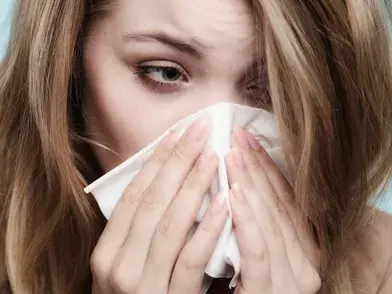Allergic rhinitis or hay fever is a condition marked by symptoms such as runny nose and itchy eyes, mouth or skin. According to the American College of Allergy, Asthma and Immunology, this condition affects around 40 million to 60 million Americans. This occurs when the immune system of the body sensitizes and overreacts to something in the environment (grass pollen, dust mites, animal fur, mold or hair) which usually cause no problem in most people. Physicians should recognize the symptoms accurately to provide proper treatment at the right time. Alongside providing treatment, providers need to ensure that medical coding for allergic rhinitis is appropriately done on the medical claims. Following is a brief overview regarding diagnosing allergic rhinitis, treatment modalities and appropriate coding.
Accurate Diagnosis and Coding
The symptoms of allergic rhinitis vary greatly. The common symptoms include stuffy nose, itching (in nose, mouth, eyes, throat or skin), puffy, swollen eyelids, sneezing and cough. However, the symptoms may be triggered by common irritants including cigarette smoke, strong odors, cosmetics, laundry detergents, cleaning solutions, pool chlorine, car exhaust and other air pollutants. Apart from that, there are two types of allergic rhinitis – seasonal and perennial. The earlier type occurs in spring and summer due to the sensitivity towards airborne mold spores or pollens from trees, grasses or weeds. The latter occurs all through the year owing to the sensitivity towards dust mites, pet hair, cockroaches, mold or dander. Allergic rhinitis is often associated with reduced concentration and focus, limited activities, reduced decision-making capability, impaired hand-eye coordination, memory loss, irritability, sleep disorders and fatigue.
It requires one or more allergy tests to better understand the symptoms and assign a definitive diagnosis. Allergy testing helps to determine what the patient is allergic to and choose the treatment that best suits him/her. The major types of tests and their corresponding CPT codes are given below.
- Antibody testing (86000-86063)
- Challenge ingestion testing (95076-95079) and/or
- Allergy tests (95004-95071)
After confirming a definitive diagnosis, you should code and bill the signs and/or symptoms of the diagnosis apart from the diagnosis itself. You should also specify the corresponding E-code(s) if any external causes are identified. Diagnosis codes (both ICD-9 and ICD-10) for symptoms and conditions as well as allergic rhinitis are as follows.
Symptoms and Conditions
ICD-9
- 379.92: Swelling or mass of eye
- 478.0: Hypertrophy of nasal turbinates
- 478.19: Other diseases of nasal cavity and sinuses
- 564.89: Other functional disorders of intestine
- 729.81: Swelling of limb
- 780.79: Other malaise and fatigue
- 781.1: Disturbances of sensation of smell and taste
- 782.0: Disturbance of skin sensation
- 782.1: Rash and other non-specific skin eruption
- 782.2: Localized superficial swelling, mass or lump
- 782.9: Other symptoms involving skin and integumentary issues
- 784.2: Swelling, mass or lump in head and neck
- 784.91: Postnasal drip
- 784.99: Other symptoms involving head and neck
- 786.07: Wheezing
- 786.09: Other dyspnea and respiratory abnormalities
- 786.2: Cough
- 799.22: Irritability
ICD-10
- H57.8: Other specified disorders of eye and adnexa
- J34.3: Hypertrophy of nasal turbinates
- J34.89: Other specified disorders of nose and nasal sinuses
- J34.9: Unspecified disorder of nose and nasal sinuses
- R09.81: Nasal congestion
- K59.8: Other specified functional intestinal disorders
- M7939: Other specified soft tissue disorders
- R53.81: Other malaise
- R53.83: Other fatigue
- R43.8: Other disturbances of smell and taste
- R43.9: Unspecified disturbances of smell and taste
- R20.8: Other disturbances of skin sensation
- R20.9: Unspecified disturbances of skin sensation
- R21: Rash and other nonspecific skin eruption
- R22: Localized swelling, mass and lump of skin and subcutaneous tissue
- R22.0: Localized swelling, mass and lump, head
- R22.1: Localized swelling, mass and lump, neck
- R22.2: Localized swelling, mass and lump, trunk
- R22.3: Localized swelling, mass and lump, upper limb
- R22.30: Localized swelling, mass and lump, unspecified upper limb
- R22.31: Localized swelling, mass and lump, right upper limb
- R22.32: Localized swelling, mass and lump, left upper limb
- R22.33: Localized swelling, mass and lump, bilateral
- R22.4: Localized swelling, mass and lump, lower limb
- R22.40: Localized swelling, mass and lump, unspecified lower limb
- R22.41: Localized swelling, mass and lump, right lower limb
- R22.42: Localized swelling, mass and lump, left lower limb
- R22.43: Localized swelling, mass and lump, bilateral
- R22.9: Localized swelling, mass and lump, unspecified
- R23.8: Other skin changes
- R23.9: Unspecified skin changes
- R09.82: Postnasal drip
- R06.7: Sneezing
- R06.89: Other abnormalities of breathing
- R06.2: Wheezing
- R06.00: Dyspnea, unspecified
- R06.09: Other forms of dyspnea
- R06.3: Periodic breathing
- R06.89: Other abnormalities of breathing
- R05: Cough
- R45.4: Irritability and anger
Allergic Rhinitis
ICD-9
- 477.0: Allergic rhinitis due to pollen
- 477.1: Allergic rhinitis due to food
- 477.2: Allergic rhinitis due to animal (cat) (dog) hair and dander
- 477.8: Allergic rhinitis due to other allergen
- 477.9: Allergic rhinitis, cause unspecified
- 995.3: Allergy, unspecified not elsewhere classified
ICD-10
- J30.1: Allergic rhinitis due to pollen
- J30.5: Allergic rhinitis due to food
- J30.81: Allergic rhinitis due to animal (cat) (dog) hair and dander
- J30.2: Other seasonal allergic rhinitis
- J30.89: Other allergic rhinitis
- J30.0: Vasomotor rhinitis
- J30.9: Allergic rhinitis, unspecified
- T78.40XA: Allergy, unspecified, initial encounter
Allergy Immunotherapy
There are various options to treat allergic rhinitis. Medications can be used to treat seasonal allergies, nasal symptoms and for relieving itchy and watery eyes. Allergy immunotherapy can be effective for those who cannot get relief from medications. This involves giving the patients a series of injections which contain small amount of the substance (s) responsible for the allergy. Injection doses are increased slowly through a three to six month period, given once or twice a week. Once the maintenance dose is reached, injections will be given every two to four weeks. This will continue for 3 to 5 years. With this treatment, the patient’s immune system becomes less reactive to the allergens. This treatment option can provide long-term benefit for people with allergy.
The CPT codes for allergy immunotherapy are as follows:
- 95115: Professional services for allergen immunotherapy not including provision of allergenic extracts; single injection
- 95117: Professional services for allergen immunotherapy not including provision of allergenic extracts; two or more injections
- 95120: Professional services for allergen immunotherapy in prescribing physicians office or institution, including provision of allergenic extract; single injection
- 95125: Professional services for allergen immunotherapy in prescribing physicians office or institution, including provision of allergenic extract; two or more injections
- 95144: Professional services for the supervision of preparation and provision of antigens for allergen immunotherapy, single dose vial(s) (specify number of vials)
- 95165: Professional services for the supervision of preparation and provision of antigens for allergen immunotherapy; single or multiple antigens (specify number of doses)
With the widely ranging symptoms, different types of treatment procedures, and increased specificity with ICD-10, it is always better to rely upon medical coding services. You can save your effort spent on documentation and medical billing tasks and spend quality time with your patients, providing them appropriate care at the right time.


